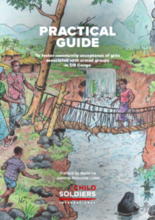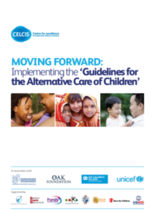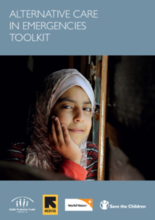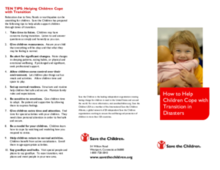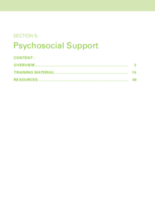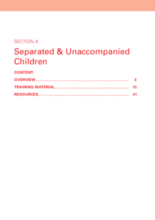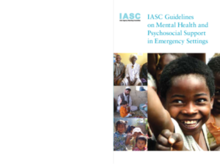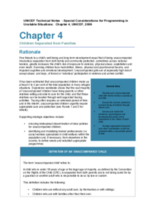This section includes tools and strategies to provide support and promote children’s development during armed conflict, displacement, and other emergency situations.
Displaying 1 - 9 of 9
This guide is presented as a “toolbox” to help DDR actors respond to the needs of girls formerly associated with armed groups in eastern DRC, and to overcome the many obstacles to their release and reintegration, reported by some of the girls themselves.
This handbook, Moving Forward: Implementation of the ‘Guidelines for the Alternative Care of Children,’ is aimed at legislators, policy-makers and decision-makers, as well as professionals and care providers, to support the implementation of the Guidelines for the Alternative Care of Children, endorsed by the United Nations General Assembly in 2009. It explains the key thrusts of the Guidelines, outlines the kind of policy responses required, and describes ‘promising’ examples of efforts already made to apply them in diverse communities, countries, regions and cultures.
The Alternative Care in Emergencies Toolkit is designed to facilitate interagency planning and implementation of alternative care and related services for children separated from or unable to live with their families during and after an emergency.
A leaflet for parents on how to help your child cope during an evacuation or relocation in an emergency.
Contains guidance on how to develop programs to respond to the psychosocial needs of children affected by emergencies. Includes a training schedule, worksheets, and handouts.
Contains an overview of programming to prevent and respond to separated and unaccompanied children, including care arrangements. Includes a training program.
Guidelines for a multi-sectoral response to the most urgent mental health and psychosocial issues in emergency situations.
Practical guidance on responding to the protection and care needs of children separated from their families, with sections on consideration of and arrangements for interim care, family reunion, and alternative long-term placements.
Training materials on the threats to children’s development from displacement and armed conflict and other emergency situations. It includes guidance on strategies to promote children’s development in adverse conditions.

